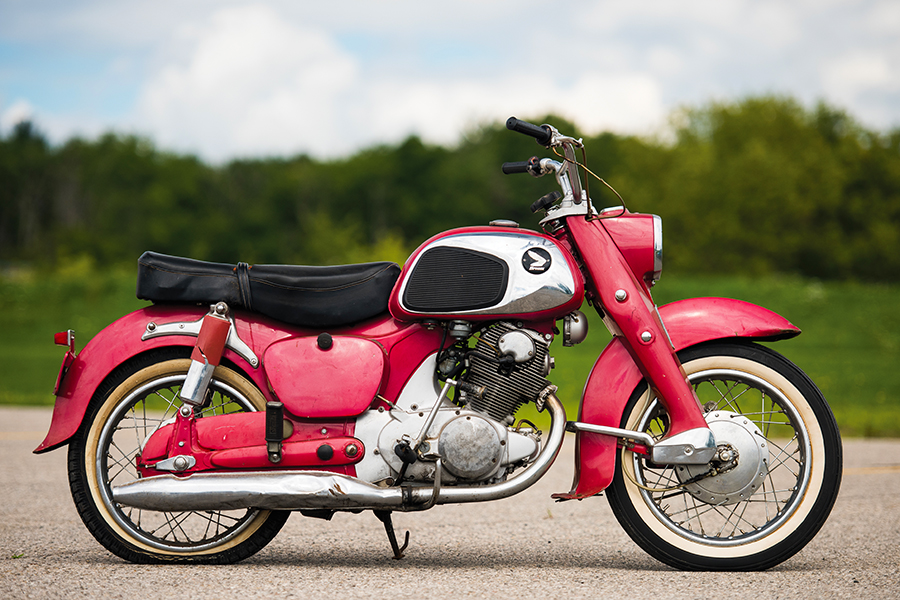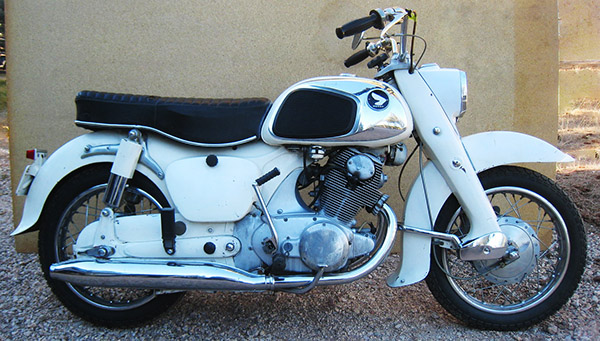By Joe Berk
That’s me, age 15, in the photo above. I’m on my Dad’s Honda Super Hawk, and no, I wasn’t getting ready to do my best impression of Rollie Free or Walt Fulton (even though I was apparently wearing the same swim trunks as ol’ Rollie). I wasn’t getting ready for a high speed run at all…it was summer, and we spent a lot of time in the water in those days. And when Dad said it was okay (and sometimes when he didn’t), I rode the Super Hawk in the fields behind our house.
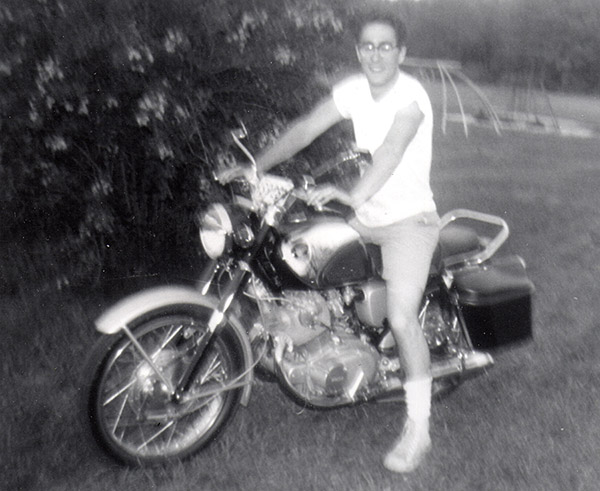


The Honda fascination started with me as a 13-year-old kid. We weren’t motorcycle people. Yet. I was mesmerized by a ’64 Triumph 500cc Tiger a guy at school owned. That started a slew of snail mail requests to the motorcycle companies (snail mail was all we had back then, but we never felt communications deprived), and pretty soon I had a collection of moto sales literature. Dad started looking at it. Then we saw a Honda Dream at a McDonald’s (I wrote about that a few blogs back). A short while later, Dad’s trapshooting buddy Cliff Leutholt (one of those nicest people who rode a Honda) visited us on his Super Hawk. Jet black, chrome, silver paint, twin carbs, electric start, it was stunning. Cliff said it was good for 100 mph. Dad rode it (a first for my father) and he was hooked. The 1960s were good times.
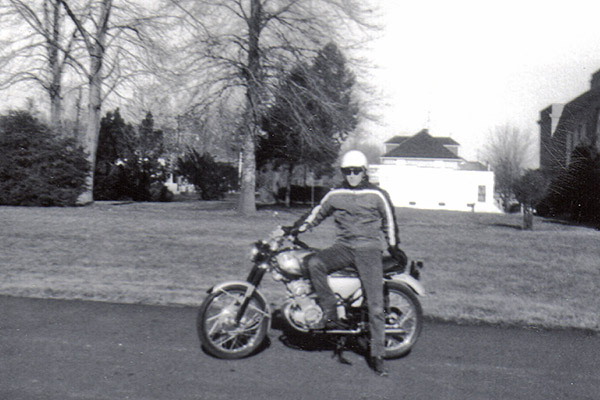
The bug bit hard. Dad started looking at the classifieds (remember those?), and in 1965, he bought the Baby Super Hawk, a scaled down, 160cc version of the 305. Dad owned that bike for only a few months, and then he traded it in on a Super Hawk. Sherm Cooper (of Cooper’s Cycle Ranch) offered Dad $450 for the 160 against the Super Hawk’s $730 (it was $50 more than Dad had paid for the 160), and just like that, we had a Super Hawk. Boy, that was a blast.
Hey, help us out…do a friend a favor…please click on the popup ads!
The Honda Super Hawk emerged from a vibrant and dazzlingly successful Honda Motor Company. Honda first brought its motorcycles to the US in 1959, and, well, you know the rest. 1961 saw the creation of the 250cc Honda Hawk, which quickly evolved into the Super Hawk. The Super Hawk bumped displacement to 305cc, and its 180-degree parallel twin was good for 28 horsepower at 9200 rpm (unheard of engine speeds back in the early 1960s). The Hondas had 12-volt electrics, twin 26 mm Keihin carbs, a single overhead cam, a 4-speed transmission, and a wet sump lubrication system.
Like the Honda Dream in our recent blog, the Super Hawk had an electric starter, along with a kickstarter that oddly rotated forward (it was hard to look like Marlon Brando kick starting a Super Hawk, but I did my best). The instrumentation was a cool touch. Instead of the more conventional (i.e., British) separate cans for the tach and the speedo, both were contained in a single panel atop the headlight. The Super Hawk had a tubular steel frame and front forks, but no front frame downtube (the engine was a stressed member). The electric starter occupied the space where front downtube would be. It was a clever engineering solution and that electric starter made life easier, but the Super Hawk didn’t look as cool as the 305cc CL 77 Scrambler (more on the Scrambler in a future blog).
The Super Hawk was a runner. A road test in Cycle World magazine had the top speed at 104.6 mph and the bike ran a respectable 16.8-second quarter mile at 83 mph. Super Hawks had twin leading shoe front brakes (something special in the pre-disk-brake era). The motorcycle weighed 335 pounds. The Super Hawk could be had in the same blue, black, white, or red color choices as the Honda Dreams, but unlike the Dream, all the Super Hawks had silver frames, side covers, and fenders. I remember that nearly all Super Hawks were black; it was very unusual to see one in any other color unless you were an Elvis fan.
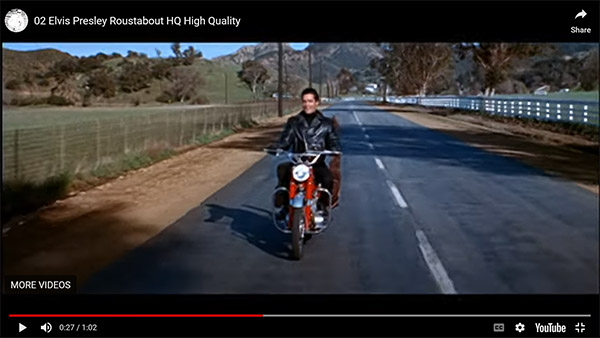
The Super Hawk had good starring roles, too, before product placement became the mega-industry it is today. There were pop songs about Hondas. Elvis Presley rode a red Honda Super Hawk in the 1964 movie Roustabout. And a fellow named Robert Pirsig rode across the US on one with his son and wrote a book about it (Zen and the Art of Motorcycle Maintenance); that book has become something of a bible in the travelogue and motorcycle deep think genres. Pirsig’s Super Hawk currently resides in the Smithsonian.
So, back to my early days and my turning Dad into a rider: As awesome as the Super Hawk was, it didn’t last long. The progression back in those days was a small Honda, a bigger Honda, and then (before the advent of the Honda CB 750 Four), a jump to a Triumph or BSA. Dad had been bitten by the bug big time, and in 1966, he bought a new Triumph Bonneville. But that’s a story for another blog.
Never miss an ExNotes blog:
More Dream Bikes!
Our previous blog on the Honda Dream is here. And here’s our blog on riding a Honda Scrambler in New Jersey’s Pine Barrens: Jerry and the Jersey Devil.


